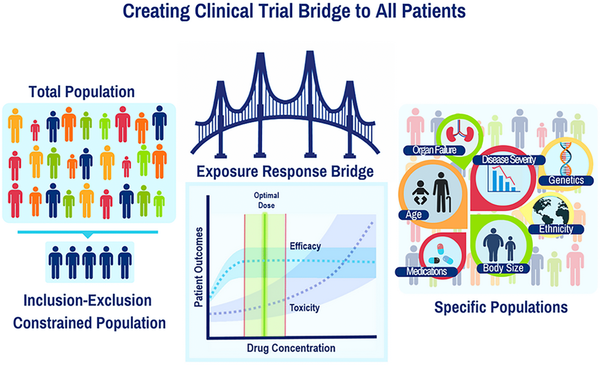Author: Mark Dresser, PhD on January 10, 2018 
With the continued advancement and expansion of pharmacogenetics testing into clinical practice, the widespread adoption of electronic health record (EHR) systems in hospitals and other clinical research centers, and the development of PKPD models to guide, model-informed dosing, there has been significant progress toward precision medicine and making precision dosing a reality. However, significant technical and logistical challenges remain to be addressed. In a recent Review published in Clinical and Translational Science, Gonzalez and colleagues provide an excellent overview of the public health need, a proposed framework, and the anticipated impact of precision dosing for relevant drugs. The authors define “precision dosing” as the optimization of drug dosing in individual patients with the goal of maximizing efficacy and/or minimizing toxicity.
Precision dosing should be feasible by taking into account factors and data that contribute to the interindividual variability of drug exposure and response. This information should be available now or in the future in a patient’s EHR, which is essentially a digital version of a patient’s chart, and would be integrated with computer provider order entry (CPOE) and clinical decision support (CDS) tools. In addition to outlining these and other available tools to enable precision dosing, Gonzalez and colleagues also outline the types of drugs as well as the patient populations that may benefit the most from precision dosing, and they provide numerous specific examples as well as conceptual frameworks.
While much work remains to be done to fully realize the potential for precision dosing, Gonzalez and colleagues note that the clinical and financial impact of precision dosing is likely to be both significant and measureable and may include attainment of optimal drug concentration by taking factors (e.g., body size, metabolic enzyme induction or inhibition, age, impactful genetic polymorphisms) into account when selecting a dose level and/or dose regimen for a given patient to maximize potential benefits and minimize drug-related toxicities.
In addition to the review by Gonzalez and colleagues, Clinical and Translational Science has recently published a number of articles related to Precision Medicine:
The CTS Editorial Team welcomes the submission of robust, translational research of precision medicine and precision dosing such as the work highlighted above.
Image by Gonzalez, et al. Clin. Trans. Sci., doi: 10.1111/cts.12490, is licensed under CC BY-NC-ND 4.0. ©2017 The authors.

The comment feature is locked by administrator.